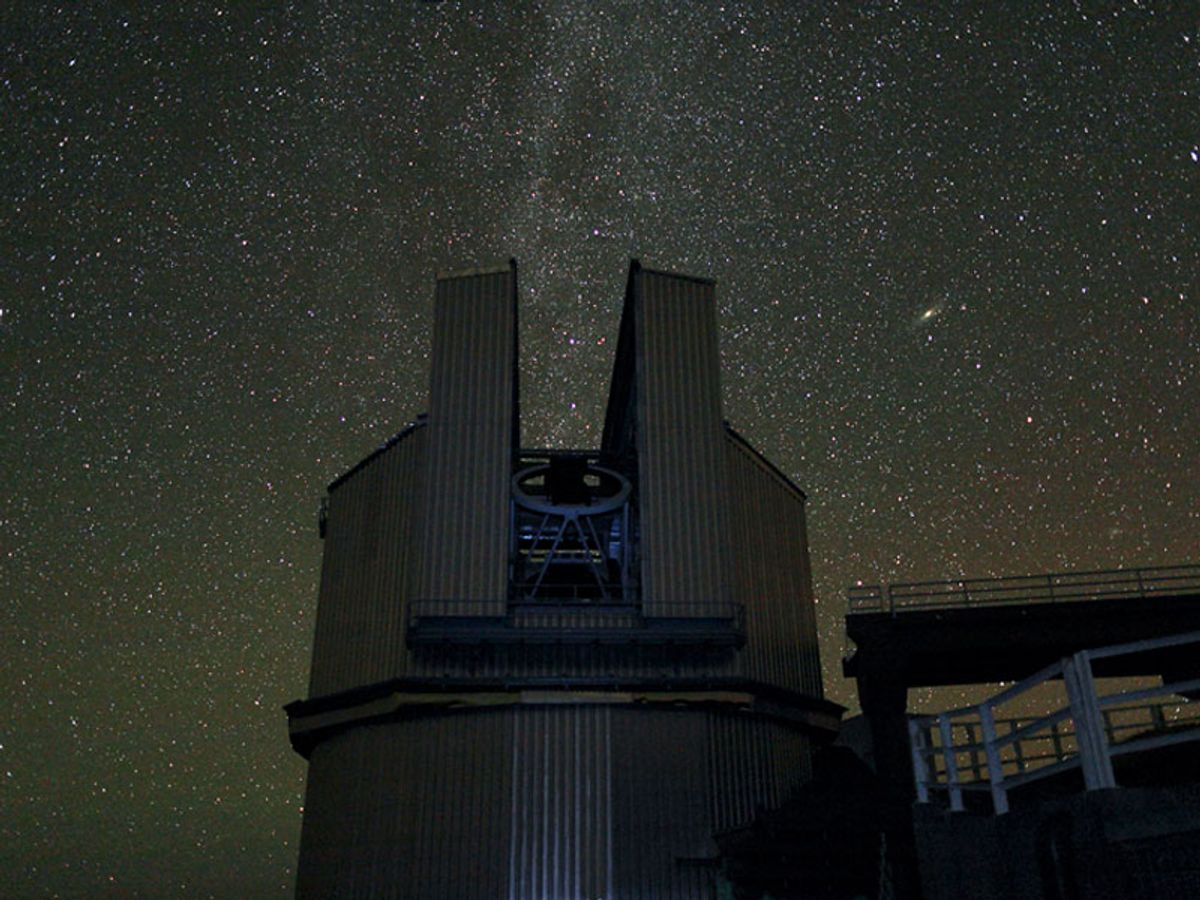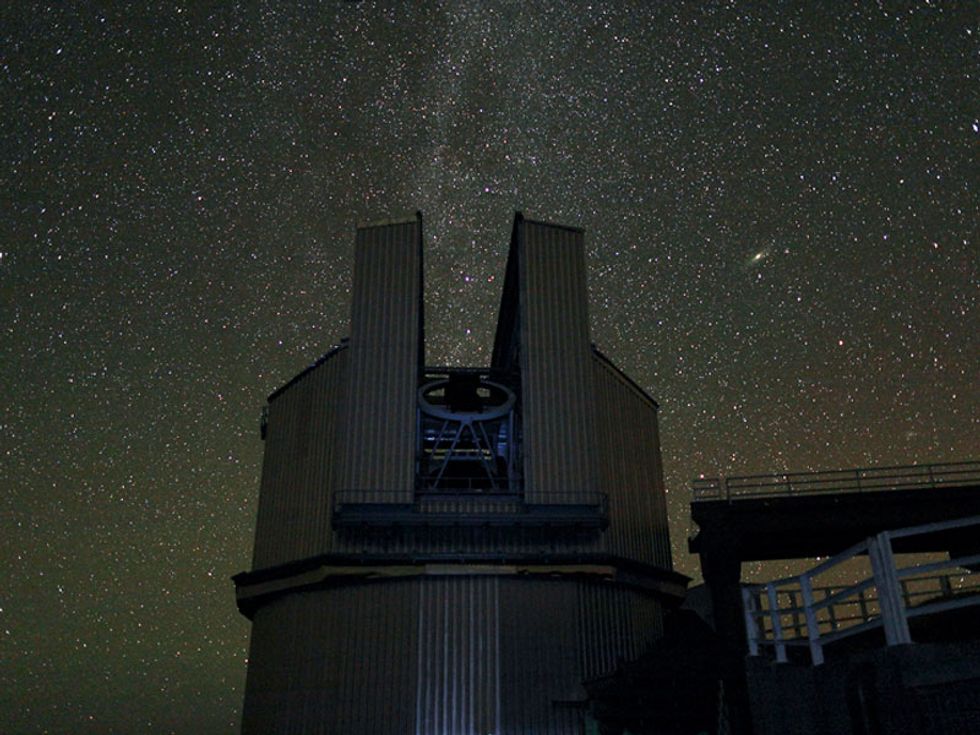Single Blue Planet Seeks Same
In 2012, a new exoplanet hunter will look for worlds like our own

Francesco Pepe leans over a large black chest in the basement of the Geneva Observatory. He lifts the lid to reveal a length of rubbery fiber-optic cable coiled along the bottom and surrounded by steep cliffs of foam. “I think they may have gone a little overboard with the packaging,” Pepe says.
Dwarfed by its container, the cable doesn’t look that impressive, but it will soon be a key component in the hunt for planets like our own. In just a few months, astronomers will use the fiber to feed starlight into a new detector—the High Accuracy Radial velocity Planet Searcher–North (HARPS-N), an ultra-precise spectrograph that is being assembled nearby, not far from a field of grazing horses.
In the coming months, Pepe, an astronomer, and his colleagues will take apart the go-cart–size instrument, box up the pieces, and put them together again in a room near Italy’s Telescopio Nazionale Galileo on La Palma, one of the Canary Islands.
When HARPS-N begins observations in April, astronomers expect it will be the most precise planet hunter in the northern hemisphere. They also reckon it will be particularly well placed to help bag the most coveted extrasolar quarry of all—planets small enough to have rocky surfaces and cool enough to have liquid water. The -reason? HARPS-N will not be working alone. It will view a particular patch of the sky that has been the singular focus of NASA’s Kepler telescope for almost three years.
Kepler, which trails behind Earth in a solar orbit all its own, is on the hunt for the subtlest of flickers—periodic dips in stellar brightness caused by planets that pass, or “transit,” in front of their host stars and briefly block about 0.01 percent of the light. And by all accounts, the spacecraft’s dogged focus on a single region of the sky has paid off nicely. In December, Kepler’s astronomers announced the discovery of a planet orbiting far enough from its sun-like host to be able to boast liquid water.
With a little luck and enough time, Kepler will find many more such planets, some quite similar in size to Earth.
To confirm its discoveries and learn as much as possible about these planets, Kepler needs help on the ground. Unless the space telescope spots a close-knit system of planets that influence one another’s orbits, Kepler’s measurements can reveal only the size of a planet, not its density. To distinguish a gas giant like Neptune from a rocky super-Earth, astronomers need a tool capable of measuring mass precisely—a spectrograph.
A spectrograph uses a diffraction grating to separate incoming starlight so that different wavelengths hit different parts of a charge-coupled device (CCD). By a trick of inference, astronomers can use changes to surrounding pixels to pinpoint—with subpixel precision—the shift in any particular peak or trough in a star’s spectrum. These shifts can occur if the star is moving toward or away from Earth. If a detector shows a star wiggling back and forth, and if these wiggles occur with regularity, the signal is a good indication that there is a planet in orbit, tugging on its host.
HARPS-N should be able to detect changes in the position of spectral lines to within 15 nanometers, which is about one-thousandth the width of a single pixel on its 6-centimeter-wide, 16-megapixel CCD. That’s enough to pace the to-and-fro motion of a star to within 1 meter per second—about walking speed—from hundreds of light-years away.
Even that’s not quite good enough to spot something like Earth from afar, says David Latham, a member of the HARPS-N team at the Harvard-Smithsonian Center for Astrophysics in Cambridge, Mass. But he says HARPS-N will still be more than twice as precise as the Kepler team’s main follow-up instrument, the High Resolution Echelle Spectrometer, which sits atop Mauna Kea, Hawaii at the W.M. Keck Observatory.
As a result, HARPS-N and Kepler together will be able to offer portraits of planets that are on the edge of habitability. Chances are good, team members say, that HARPS-N will be able to see rocky planets that are roughly a few times the mass of Earth and on orbits that lie within the “Goldilocks” zone, where temperatures are just right for life. “We’re not going all the way to characterizing true Earth twins, but we are pushing in that direction,” says Latham, who helped to get the HARPS-N project started. “It’s a big step.”
The detector’s main components are nearly identical to those of its progenitor, the HARPS detector at the European Southern Observatory’s high-altitude La Silla Observatory, in Chile. But HARPS-N will also get a few improvements that could help boost its sensitivity.
The telescope’s new fiber is one of the key changes. The original HARPS instrument uses a circular fiber to feed starlight into the spectrograph. But the position of the light that exits the fiber can shift depending on how a star is positioned in the telescope, and that can register as movement of spectral lines on the detector. “If [the lines] move because of differing illumination, that is catastrophic for us,” Pepe says. To remedy the situation, HARPS-N will use a fiber with an octagonal cross section. The team hopes that the eight facets will scatter and homogenize the light so that it will always exit the fiber evenly.
A few months after installation, HARPS-N will play guinea pig for another potential improvement, a new kind of light source called a laser frequency comb, which could be used to calibrate the detector. Today many astronomical spectrographs are calibrated using the spectral lines emitted by thorium argon lamps, which have irregular lines that vary widely in brightness and spacing and shine on only a small fraction of the CCD cells in a detector. A laser comb instead uses brief pulses of laser light to create millions of evenly spaced lines over a wide range of wavelengths, which can be tuned to calibrate every pixel in a spectrograph’s CCD. A comb calibrator can also be made very stable by matching key frequencies with those of an atomic clock. The HARPS-N team will test one incarnation of the laser comb, which uses a titanium sapphire laser, while others are working on fiber laser-based systems.
In the next few years, astronomers hope these combs could help improve the precision of stellar spectrographs by a factor of 10, if not more. If there are no confounding factors—not least the natural fluctuations in a star’s atmosphere—that should be precise enough to detect the planet of our dreams: a true Earth twin.
This article originally appeared in print as “In Search of Alien Worlds.”
About the Author
For more about the author, see the Back Story, “A Planet Like Our Own.”


